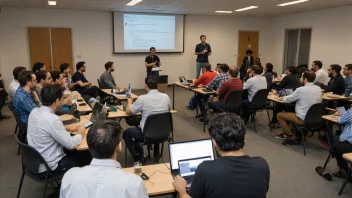In today's rapidly evolving technological landscape, open-source software has emerged as a formidable ally for corporations seeking innovation, cost efficiency, and enhanced collaboration. However, integrating open-source solutions into corporate environments can present unique challenges. Understanding the best practices for adoption can significantly ease this transition and foster a culture that embraces open-source principles. Here, we explore five essential steps to successfully adopt open-source software in corporate settings.
1. Assess Organizational Needs
Before diving into the world of open source, it is crucial for organizations to evaluate their specific needs. This assessment should include:
- Identifying Key Areas: Determine which business processes or functions can benefit from open-source solutions.
- Evaluating Existing Infrastructure: Analyze current systems and software to identify compatibility and integration opportunities.
- Understanding Stakeholder Requirements: Engage with different teams to understand their unique needs and expectations from open-source tools.
Conducting a comprehensive needs assessment can help in selecting the right open-source projects that align with corporate objectives.
2. Establish Governance and Compliance Framework
Implementing open-source software without a solid governance framework can lead to compliance issues and security risks. Organizations should:
- Develop Policies: Create clear policies regarding the use, contribution, and distribution of open-source software.
- Assign Responsibility: Designate a team or individual responsible for overseeing open-source initiatives and compliance.
- Monitor Usage: Regularly review open-source software in use to ensure it meets legal and security standards.
Establishing a robust governance framework not only mitigates risks but also promotes a culture of responsibility within teams.
3. Encourage Collaboration and Training
Adopting open-source solutions opens avenues for collaboration, both internally and with the wider community. To foster this environment:
- Provide Training: Offer training sessions for employees to familiarize them with open-source tools and best practices.
- Promote Community Engagement: Encourage teams to participate in open-source communities, contributing code, or collaborating on projects.
- Facilitate Knowledge Sharing: Create platforms or forums for employees to share insights, challenges, and solutions related to open-source adoption.
By promoting collaboration and continuous learning, organizations can maximize the benefits of open-source software.
4. Start with Pilot Projects
Instead of a full-scale implementation, beginning with pilot projects allows organizations to test the waters. Consider the following:
- Select a Low-Risk Project: Choose a project that has a manageable scope and is not mission-critical.
- Monitor and Evaluate: Track the progress and gather feedback from users to identify challenges and areas for improvement.
- Iterate and Improve: Use insights gained from the pilot to refine processes and address issues before broader implementation.
Pilot projects can serve as a valuable learning experience and help build confidence in transitioning to open-source solutions.
5. Measure and Communicate Success
Once open-source software is in use, it’s vital to measure its impact and communicate successes across the organization. This can be achieved by:
- Setting Clear Metrics: Define key performance indicators (KPIs) to assess the effectiveness of open-source solutions.
- Celebrate Achievements: Share success stories and benefits realized from open-source adoption to motivate teams and stakeholders.
- Solicit Feedback: Regularly seek input from users to identify areas for improvement and enhance future projects.
By measuring success and effectively communicating it, organizations can solidify their commitment to open-source principles and encourage further adoption.
In conclusion, adopting open-source software in corporate environments requires thoughtful planning and execution. By assessing organizational needs, establishing governance, encouraging collaboration, starting with pilot projects, and measuring success, corporations can navigate the complexities of open-source adoption and fully leverage its benefits. As the landscape continues to evolve, embracing open-source may very well be a key driver for innovation and competitive advantage.






